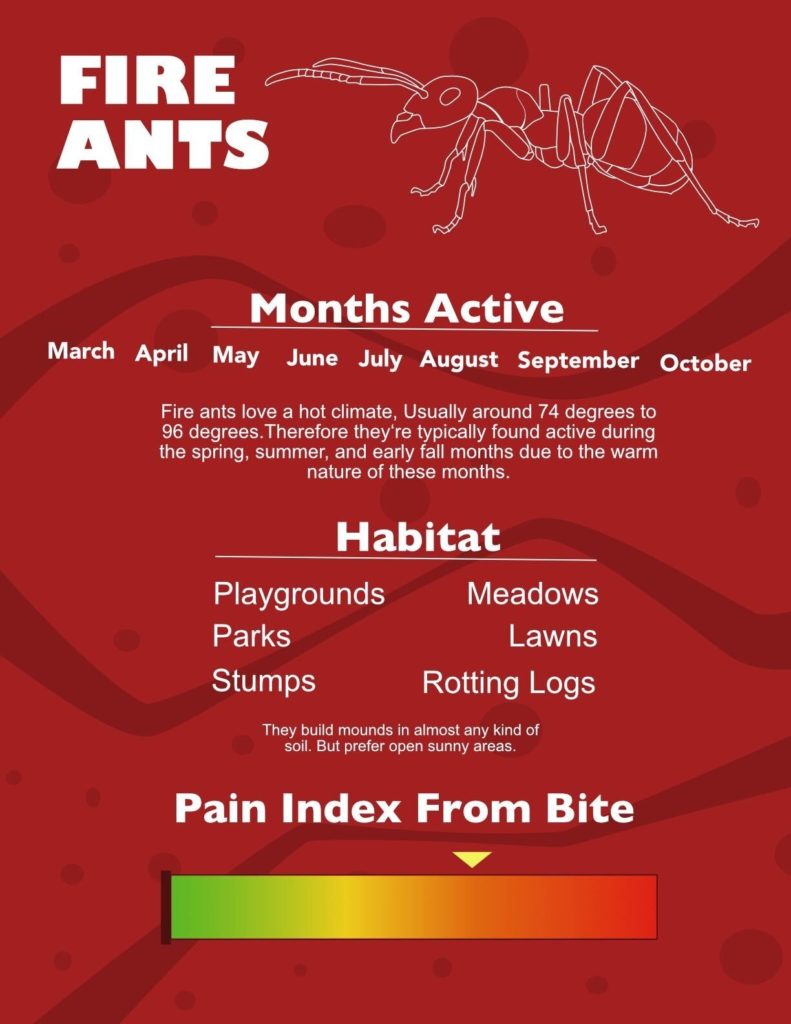When Are Fire Ants Active?
Pests are a dime a dozen. One such pest is the fire ant, which has been around for decades. Originating in South America, fire ants arrived in the U.S. somewhere between 1933 and 1945. While they can pop up across the nation, these pests are commonly found in the southern states ranging from Texas to Florida. It’s common knowledge that these critters can be aggravating and quite painful if they bite. Knowing how to deal with them is very important but it also helps to know when they are active.
According to Pest World, fire ants get their name from their ability to inflict painful bites and stings. They range in size from 1/8 to 3/8 inches long and are generally a dark, reddish brown.
What Months Are Fire Ants the Most Active?
Fire ants search for food in temperatures that range between 72°F and 96°F. With that being said, they tend to be especially active during the summer months and early fall. However, there are instances when they can be active year-round. Despite the fact that their name may imply heat, extremely high temperatures may cause fire ants to remain under soil by digging into the ground in an effort to stay cool.

Habitat
Fire ants live in colonies of up to 200,000 individuals. Their mounds can be two feet high and three feet across with as many as 50 colonies per acre. They are commonly introduced into new areas through potted plants, shrubs and trees. Although fire ants are typically found outside, if they manage to get inside, they can become a real issue.
Pain Scale
As indicated earlier, a fire ant’s bite can be extremely painful. A bite from a fire ant can result in pustules that could take up to 10 days to heal. Usually, a bite begins with an intense pinching or burning pain immediately after the sting. This pain is short-lived, lasting anywhere from a few seconds to a few minutes. This is followed by an itching or burning sensation that may be minor or extreme.
Symptoms of a Fire Ant Bite:
- A painful raised bump that becomes a pus-filled blister in 6-24 hours and remains for up to 10 days
- Skin at the bite site that dies and leaves a scar or bump
- A toxic reaction when there may have been 20 or more stings
- Redness and swelling extending beyond the sting site
Home treatment can help relieve pain and prevent infection. Some individuals are extremely allergic to fire ant bites and may need fast medical attention to deal with the toxin.
How to Prevent Fire Ants from Invading Your Home
To avoid bites and fire ants in general, it’s a good idea to stay away from them. Ants like sheltered spaces that allow them easy access to food and water. Here are some tips to keep them out of your home.
- Keep plant material away from your home and the base of the foundation
- Trim back shrubs and make sure mulch and ground cover are at a distance from the home’s foundation
- Check under attic insulation for the ant colonies
If you do find an ant infestation, work with a trained pest prevention expert to remove them from your home. Hardware store and DIY remedies are only temporary. If a large colony of ants has taken up residence in your home, you’ll need professional help to remove them and put a plan in place to keep them from coming back. Massey Services is here to help!